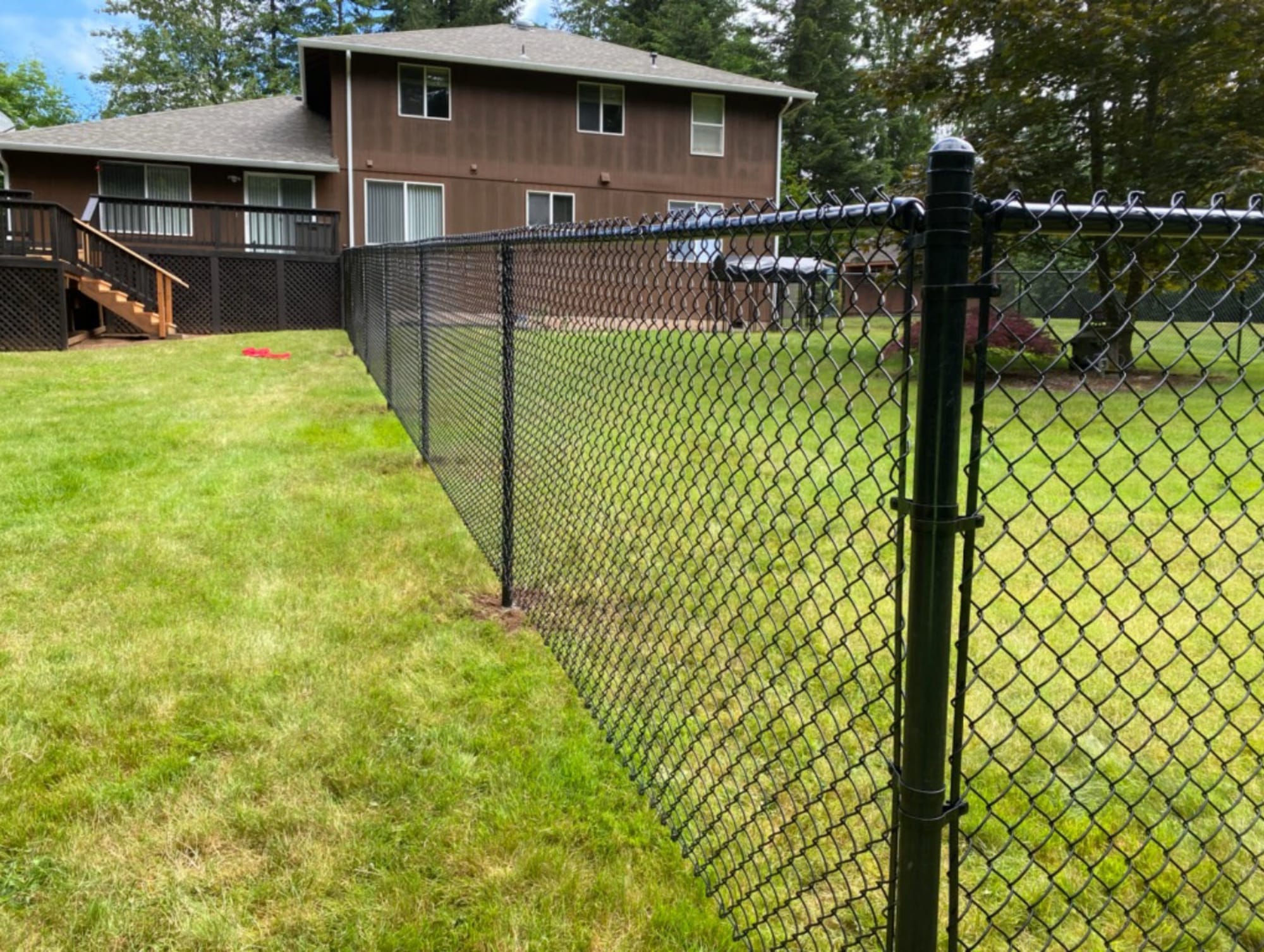All Categories
Featured
Various locations have varying regulations, and recognizing what's required will certainly aid make certain that your fencing is lawful, risk-free, and constructed according to regional criteria. Below's a guide to assist you browse the allowing process for fence installment.
Why Are Allows Called for? Licenses are required to guarantee that the installation of your fencing meets regional building regulations and zoning regulations. These policies are in location to preserve the safety and security, appearance, and performance of buildings in your neighborhood. In addition, allows assistance prevent conflicts with neighbors pertaining to residential or commercial property lines, fencing elevation, and other structural information.
Local authorities need permits to check things like visibility at junctions, public security, and prospective damage to energies like water pipelines or electric lines. The procedure helps keep your fencing job certified with security and lawful standards.
Kinds of Licenses You May Require. The precise permits needed can differ depending on your location and the specifics of your task. Below are the most common sorts of licenses you might require:
Building Authorization. Many cities and counties call for a structure permit for fences that go beyond a specific elevation, normally over 6 feet. This permit makes sure that your fence abides with architectural standards, specifically if it's made from certain materials such as concrete, metal, or brick. Building authorizations are likewise needed when your fencing affects the total landscape, like developing an audio barrier or obstructing a sightline.
Zoning Authorization. Zoning authorizations are issued to make sure that your fence abides by regional zoning regulations. These legislations might regulate where fencings can be positioned on your property (e.g., backyard, front, or side), how high they can be, and whether they can be mounted near roads or sidewalks. Zoning laws are established to preserve the overall aesthetic appeals of communities and preserve web traffic security.
Problem Authorization. Some locations have problem policies that identify just how much a fence must be from the residential property line, roadway, or particular public rooms. Trouble authorizations are made to make sure that your fence doesn't hinder neighboring homes or public locations. A building study may be called for to verify residential property lines before acquiring this type of authorization.
HOA Approval. You might need to get approval from the HOA before mounting a fence if you live in an area governed by a Homeowners Association (HOA) HOAs commonly have strict standards concerning the sort of fence admitted the area, including its material, height, and color. Always get in touch with the HOA before beginning your job to prevent any type of problems.
Just How to Get a Fencing License. The procedure for acquiring a permit normally entails several actions:
Research Local Rules. Begin by inspecting your city or area's web site to learn the specific demands for fence setup. You might require to see the local planning or structure department personally for more in-depth details.
Prepare Your Application. Most cities will certainly require an application, that includes information concerning your planned fencing, such as:
![]()
The kind of fence product (wood, plastic, chain-link, and so on) The prepared elevation of the fencing. The location and measurements of the fencing. A residential property study (to validate home lines) Send the Application. After finishing the application, submit it to the local building or zoning office. You may be called for to pay a cost depending on your location and the size of your fence. Fees can vary, but they typically cover the price of processing your request and examining your strategies.
Wait On Approval. Once your application is sent, the local authorities will certainly review your plans to guarantee they meet zoning and constructing needs. This process can take anywhere from a few days to numerous weeks, relying on the complexity of the project and the quantity of authorization demands in your area.
![]()
If Necessary),Evaluation (. In some situations, you might require to set up an assessment after the fence is set up to ensure it meets the needed requirements. If this step is required., your neighborhood office will certainly allow you understand.
When You Don't Required an Authorization. Not every fence installment calls for a license. Some circumstances where you might not need a permit consist of:
Installing a fence that's under a specific height (usually 3-4 feet for front lawns) Replacing an existing fence with one that coincides elevation and product. Mounting a short-term fence (e.g., for building and construction or gardening) Nonetheless, even if your task appears tiny, it's constantly recommended to get in touch with neighborhood authorities to make certain you're adhering to the appropriate process.
Consequences of Not Obtaining a License. Setting up a fencing without the necessary authorization can result in significant consequences, including fines, removal of the fencing, and costly reinstallation. In some cases, local authorities might require you to change the fence if it doesn't fulfill code requirements. Furthermore, not acquiring a license could produce disputes with neighbors, specifically if the fencing is positioned inaccurately or breaches local elevation laws.
Conclusion. Before setting up a fencing, it is essential to research the certain allowing requirements in your area. Contact your neighborhood building or zoning department to figure out if a license is needed and to ensure that you're adhering to the appropriate treatment. By securing the right licenses, you'll ensure and stay clear of legal concerns that your fence setup is secure, compliant, and easy.
Why Are Allows Called for? Licenses are required to guarantee that the installation of your fencing meets regional building regulations and zoning regulations. These policies are in location to preserve the safety and security, appearance, and performance of buildings in your neighborhood. In addition, allows assistance prevent conflicts with neighbors pertaining to residential or commercial property lines, fencing elevation, and other structural information.
Local authorities need permits to check things like visibility at junctions, public security, and prospective damage to energies like water pipelines or electric lines. The procedure helps keep your fencing job certified with security and lawful standards.
Kinds of Licenses You May Require. The precise permits needed can differ depending on your location and the specifics of your task. Below are the most common sorts of licenses you might require:
Building Authorization. Many cities and counties call for a structure permit for fences that go beyond a specific elevation, normally over 6 feet. This permit makes sure that your fence abides with architectural standards, specifically if it's made from certain materials such as concrete, metal, or brick. Building authorizations are likewise needed when your fencing affects the total landscape, like developing an audio barrier or obstructing a sightline.
Zoning Authorization. Zoning authorizations are issued to make sure that your fence abides by regional zoning regulations. These legislations might regulate where fencings can be positioned on your property (e.g., backyard, front, or side), how high they can be, and whether they can be mounted near roads or sidewalks. Zoning laws are established to preserve the overall aesthetic appeals of communities and preserve web traffic security.
Problem Authorization. Some locations have problem policies that identify just how much a fence must be from the residential property line, roadway, or particular public rooms. Trouble authorizations are made to make sure that your fence doesn't hinder neighboring homes or public locations. A building study may be called for to verify residential property lines before acquiring this type of authorization.
HOA Approval. You might need to get approval from the HOA before mounting a fence if you live in an area governed by a Homeowners Association (HOA) HOAs commonly have strict standards concerning the sort of fence admitted the area, including its material, height, and color. Always get in touch with the HOA before beginning your job to prevent any type of problems.
Just How to Get a Fencing License. The procedure for acquiring a permit normally entails several actions:
Research Local Rules. Begin by inspecting your city or area's web site to learn the specific demands for fence setup. You might require to see the local planning or structure department personally for more in-depth details.
Prepare Your Application. Most cities will certainly require an application, that includes information concerning your planned fencing, such as:

The kind of fence product (wood, plastic, chain-link, and so on) The prepared elevation of the fencing. The location and measurements of the fencing. A residential property study (to validate home lines) Send the Application. After finishing the application, submit it to the local building or zoning office. You may be called for to pay a cost depending on your location and the size of your fence. Fees can vary, but they typically cover the price of processing your request and examining your strategies.
Wait On Approval. Once your application is sent, the local authorities will certainly review your plans to guarantee they meet zoning and constructing needs. This process can take anywhere from a few days to numerous weeks, relying on the complexity of the project and the quantity of authorization demands in your area.

If Necessary),Evaluation (. In some situations, you might require to set up an assessment after the fence is set up to ensure it meets the needed requirements. If this step is required., your neighborhood office will certainly allow you understand.
When You Don't Required an Authorization. Not every fence installment calls for a license. Some circumstances where you might not need a permit consist of:
Installing a fence that's under a specific height (usually 3-4 feet for front lawns) Replacing an existing fence with one that coincides elevation and product. Mounting a short-term fence (e.g., for building and construction or gardening) Nonetheless, even if your task appears tiny, it's constantly recommended to get in touch with neighborhood authorities to make certain you're adhering to the appropriate process.
Consequences of Not Obtaining a License. Setting up a fencing without the necessary authorization can result in significant consequences, including fines, removal of the fencing, and costly reinstallation. In some cases, local authorities might require you to change the fence if it doesn't fulfill code requirements. Furthermore, not acquiring a license could produce disputes with neighbors, specifically if the fencing is positioned inaccurately or breaches local elevation laws.
Conclusion. Before setting up a fencing, it is essential to research the certain allowing requirements in your area. Contact your neighborhood building or zoning department to figure out if a license is needed and to ensure that you're adhering to the appropriate treatment. By securing the right licenses, you'll ensure and stay clear of legal concerns that your fence setup is secure, compliant, and easy.
Latest Posts
Find Out How Your Partner at WyHy Maximizes Your Savings on Loans and Savings
Published May 28, 25
1 min read
Discover Montclare Auto Repair’s Top Car Care Solutions and Why Drivers Trust Them
Published May 26, 25
1 min read
Recognizing When Your Car Needs Expert Auto Repair at Montclare Auto Repair
Published May 25, 25
1 min read
More
Latest Posts
Find Out How Your Partner at WyHy Maximizes Your Savings on Loans and Savings
Published May 28, 25
1 min read
Discover Montclare Auto Repair’s Top Car Care Solutions and Why Drivers Trust Them
Published May 26, 25
1 min read
Recognizing When Your Car Needs Expert Auto Repair at Montclare Auto Repair
Published May 25, 25
1 min read